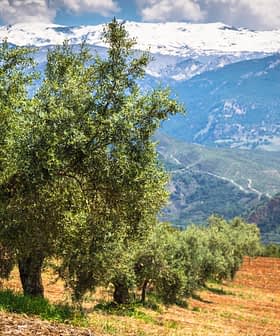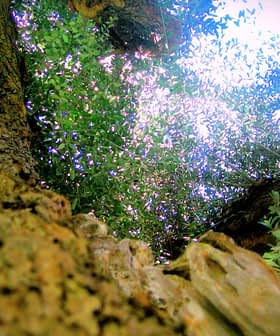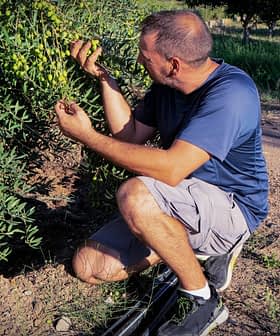Proposal to Include Apulia's 'Plain of Olive Trees' on Unesco List
The article discusses the first meeting to support the nomination of the “Piana degli Ulivi” to be recognized as a UNESCO World Heritage site due to its ancient olive trees in the Mediterranean area. The proposal is coordinated by Dr. Gianfranco Ciola and aims to promote the area’s agricultural economy and tourism, with the submission deadline set for February 28.
The first of three meetings to support the nomination of the “Piana degli Ulivi” (Plain of Olive Trees) to be inserted in the Unesco World Heritage list took place in Ostuni, Puglia.
The plain is an area between the villages of Fasano, Ostuni and Carovigno claiming the largest concentration of ancient olive trees in the Mediterranean area: some specimens date back more than 3,000 years and are considered natural archaeological monuments.
The meeting was attended by delegates of several associations, growers, tourism operators and representatives of institutions, including the mayor of Ostuni, Gianfranco Coppola, and Regional Director Giovanni Epifani.
Monuments of nature, still producing the same oil the Messapi, Romans, Byzantines, Angevins, Aragonese and Spanish tasted
The proposal is being coordinated by Dr. Gianfranco Ciola, director of the Park of the Apulian coastal dunes. According to Ciola, the inscription of the Plains in the Unesco World Heritage “will represent an important attraction for the area so rich in monumental olive trees, farms, underground mills, coastal towers. This recognition will surely provide an important tool to promote the area and to boost the agricultural economy and local tourism.”
Olive Oil Times asked Dr. Ciola some questions about the proposal.
When was the idea of proposing the Plains as a World Heritage Site born?
The project came from the will of the three municipal administrations to enhance the value of the landscape and its vast cultural and architectural assets.
The idea for the proposal was born a few years ago from the Rotary International which organized several conferences on the topic. Later, the villages of Fasano, Ostuni and Carovigno approved the start of the process of nominating the Plain. By that time the proposal was supported by many local actors: environmental groups and cultural associations, public bodies, enterprises, were all convinced that it could be a powerful tool for conservation and development of this unique agricultural landscape and its connected tourist economy.
How does the application process work?
The application must be initially forwarded to the Italian National Commission for UNESCO, for a preliminary reading, adjustment and refinement of the proposal. The work is carried out jointly with the Ministry of Culture and, in some cases, with the Ministry of Agriculture. If the proposal is considered worthy, it is inserted into a ‘Priority List.’ Next, the Ministry of Culture, by the means of the Italian Office of UNESCO, will send the application to the central UNESCO office in Paris.
The proposal must meet the guidelines established by UNESCO and is divided into four parts:
a) the proof of the exceptional universal value of the site, through a study that highlights the features making the site unique and/or in possession of an outstanding universal value
b) the comparative analysis, that compares the proposed site with national and international similar ones, showing that the candidate site owns exceptional values worldwide and not just at local or national level
c) the requirements of integrity, authenticity, and stewardship conditions, as defined in the UNESCO guidelines
d) means of protection of the site, at any national or local levels, that are essential to submit the candidacy.
What are the benefits of including the Plain among the World Heritage Sites and what are the obligations to ensure that it remains?
The recognition of World Heritage has a pretty symbolic value, since UNESCO represents a “quality mark,” a seal of prestige within the protection of cultural heritage. Secondly, the recognition has an economic value, derived from the adoption of policies that will attract more visitors and more fundings for the development and preservation of the site.
UNESCO maintains relations with both public institutions, for creating cultural projects (training activities, public art projects, etc…), and companies, engaged in co-marketing projects for the promotion of their respective brands, to acquire new targets in the fruition of the site, in the optimization of distribution channels and economic resources.
In the case of the Plains of Olive trees, the UNESCO recognition requires the government and all private entities to implement a management plan geared towards its preservation. This tool will allow us to find all the suitable instruments to preserve the sustainable farming methods and the care of traditional olive growing, thus protecting the landscape and its biodiversity.
At what point in the process is the proposal?
We are preparing the proposal, but the permanent laboratory supporting the nomination has already been enriched by many subjects in the community. Local authorities, farmers, oil producers, tourism and agritourism businesses, cultural and environmental associations, schools and training institutions, are united to achieve the goal, in the belief that the landscape of the plain of monumental groves of Puglia configures an area unique in the world for its extension and the homogeneity of the millenariani olive groves, with its plants having extraordinarily beautiful mighty and twisted trunks.
They are real monuments of nature, that is a living nature, still producing olives and oil; the same one that, in the old times, Messapi (the ancient inhabitants of Puglia), Romans, Byzantines, Angevins, Aragonese and Spanish tasted. The Plain’s traditional olive groves, with 40 – 50 plants per hectare, are one of the oldest agricultural areas of the Mediterranean, enriched by the numerous historical, cultural, archaeological and architectural evidencies, and it is unique in the world, as it still productive after more than 2000 years of life.
The procedure for submission of the proposal will end on February, 28.









